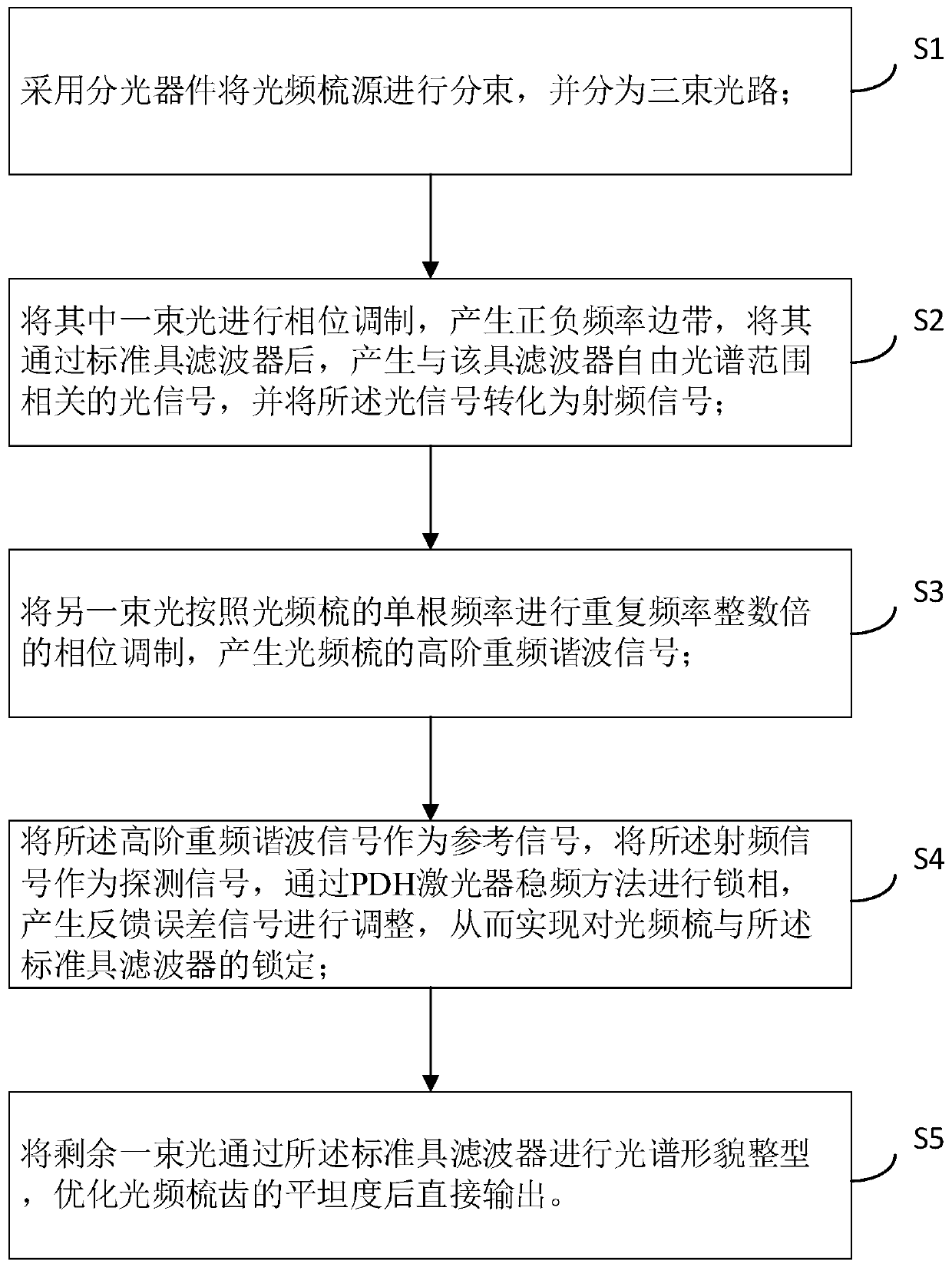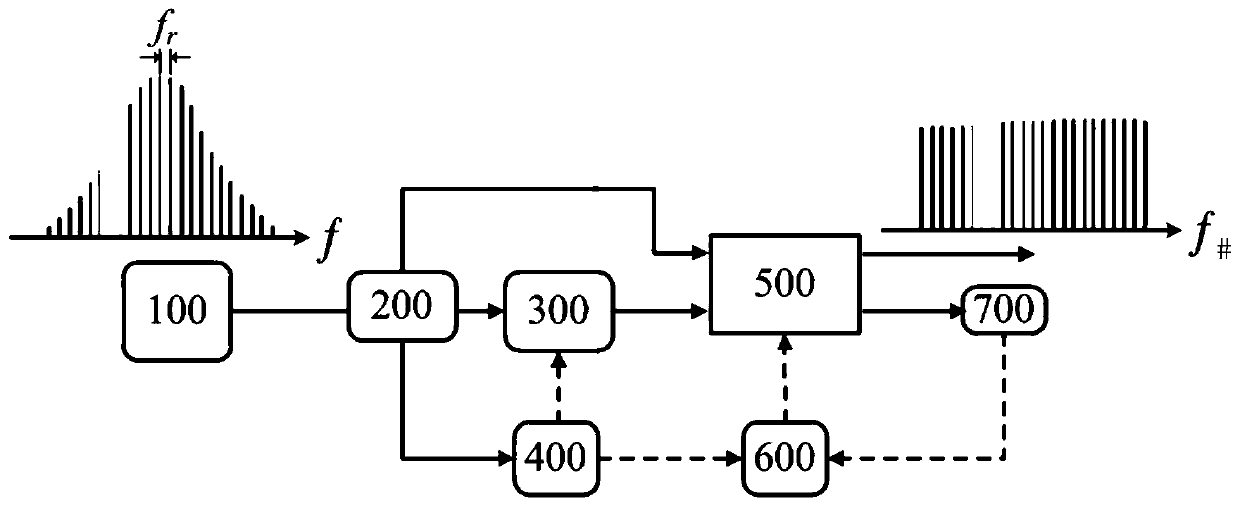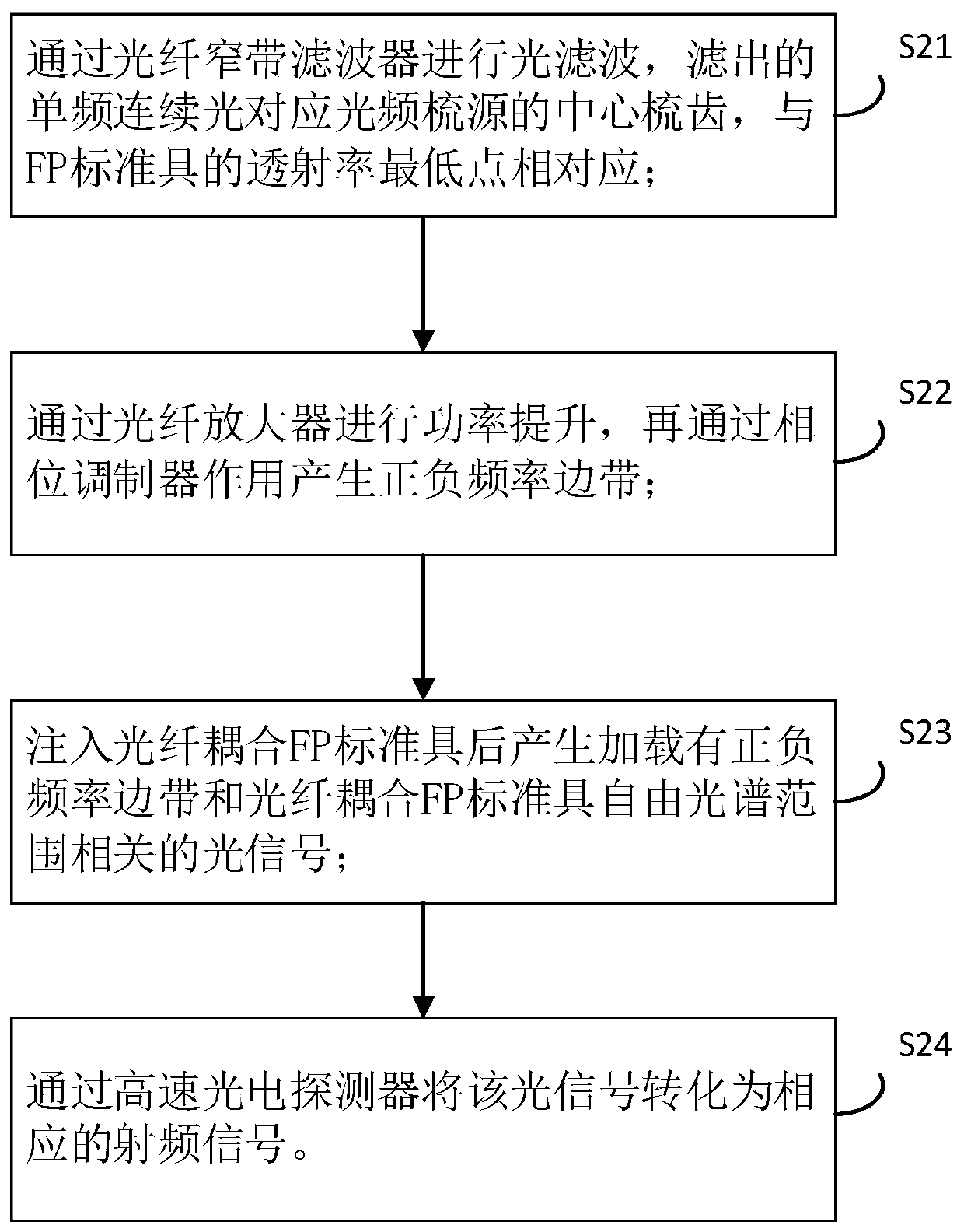An Optical Frequency Comb Flatness Control Method Based on Optical Filtering
A control method and optical filtering technology, applied in lasers, laser parts, electrical components, etc., can solve the problems of poor flatness, high noise, limited spectral components, etc., and achieve the effects of convenient operation, simple structure and great flexibility
- Summary
- Abstract
- Description
- Claims
- Application Information
AI Technical Summary
Problems solved by technology
Method used
Image
Examples
Embodiment Construction
[0033] In order to make the purpose, technical solutions and advantages of the present invention clearer, the technical solutions in the embodiments of the present invention will be clearly and completely described below in conjunction with the accompanying drawings. Obviously, the described embodiments are only part of the embodiments of the present invention, and Not all examples.
[0034] In one embodiment, as figure 1 Shown, the optical frequency comb flatness control method based on optical filtering of a kind of all-fiber structure, described method may comprise the following steps:
[0035] S1. The optical frequency comb source is split by a splitting device and divided into three beam paths;
[0036] S2. Perform phase modulation on one of the beams of light to generate positive and negative frequency sidebands, pass it through the etalon filter, generate an optical signal related to the free spectral range of the filter, and convert the optical signal into a radio fre...
PUM
 Login to View More
Login to View More Abstract
Description
Claims
Application Information
 Login to View More
Login to View More - Generate Ideas
- Intellectual Property
- Life Sciences
- Materials
- Tech Scout
- Unparalleled Data Quality
- Higher Quality Content
- 60% Fewer Hallucinations
Browse by: Latest US Patents, China's latest patents, Technical Efficacy Thesaurus, Application Domain, Technology Topic, Popular Technical Reports.
© 2025 PatSnap. All rights reserved.Legal|Privacy policy|Modern Slavery Act Transparency Statement|Sitemap|About US| Contact US: help@patsnap.com



